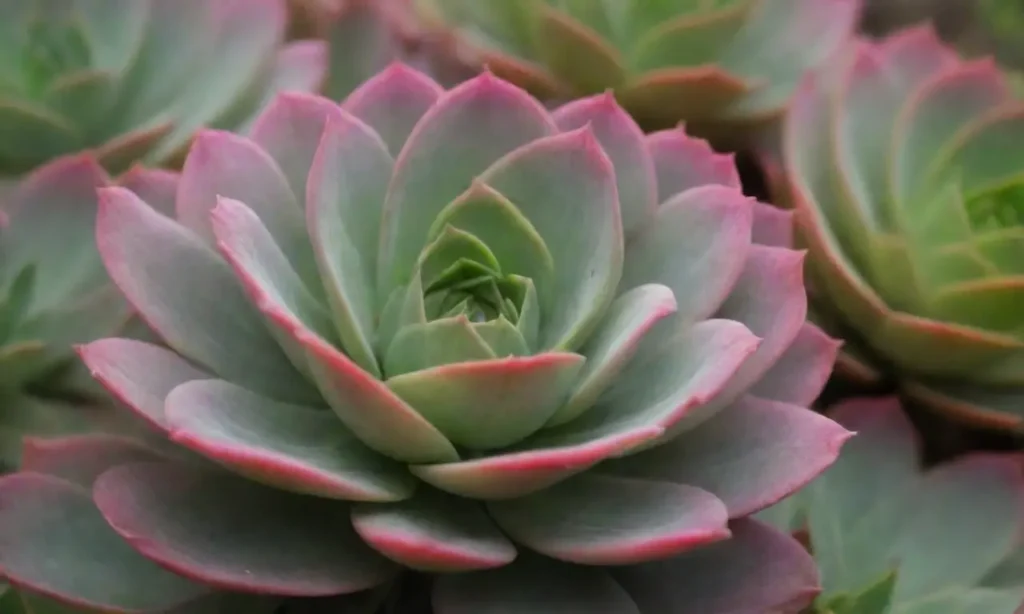
On the Brink: The Most Endangered Succulent Plants Worldwide

Introduction
Succulent plants, known for their ability to store water in their leaves, stems, or roots, represent a remarkable adaptation to arid environments. These unique plants not only captivate enthusiasts with their stunning shapes and vibrant colors but also play an essential role in maintaining ecological balance. However, succulent species are facing unprecedented threats primarily due to habitat loss, climate change, and human exploitation. This article aims to shed light on the plight of these remarkable plants as well as the urgent need for their conservation.
In this article, we'll explore the specific endangered succulent species worldwide, the factors contributing to their decline, and the crucial efforts underway to save them. We will also delve into the ecological importance of succulents and discuss how individuals and communities can contribute to their preservation. Through understanding the challenges succulents face, we can all become more informed advocates for these extraordinary plants.
The Ecological Importance of Succulent Plants
Succulent plants play a vital role not only in their native environments but also in broader ecological systems. These plants are primarily found in arid and semi-arid regions where water is scarce, serving as crucial sources of food and shelter for various animal species. For example, many succulent species produce vibrant flowers that attract pollinators such as bees and butterflies, thus facilitating the reproduction of both succulents and other neighboring plants.
Furthermore, succulents contribute to soil stabilization and erosion prevention. Their extensive root systems help bind the soil, preventing it from being washed away by rain or blown away by wind. This characteristic is particularly important in places where vegetation is scarce, helping to maintain the health of the ecosystem. Moreover, many succulents contribute to the carbon cycle by capturing and storing carbon dioxide from the atmosphere, thus playing a small yet significant role in mitigating climate change.
Additionally, succulents have been historically significant to local communities. They have been utilized for centuries by indigenous populations for medicinal purposes, food sources, and cultural practices. For example, certain Aloe species are not only prized for their unique beauty but also for their medicinal properties, which have been harnessed in traditional medicine for treating various ailments. As such, the conservation of succulent plants extends beyond ecological considerations to include cultural and historical dimensions.
Causes of Succulent Endangerment
Despite their adaptive abilities, succulent plants are facing multiple threats that put them on the brink of extinction. One of the most significant threats is habitat loss, primarily caused by urban development, agricultural expansion, and mining activities. As cities grow and agricultural lands expand, native succulent habitats are destroyed, leading to a decline in their populations. For example, succulent species endemic to specific regions often have a limited geographic range, making them particularly vulnerable to localized habitat destruction.
Another critical factor is climate change, which is causing more extreme weather conditions and altering environmental factors necessary for succulent survival, such as temperature and rainfall patterns. As climates shift, many succulent species face challenges in adapting to new conditions or finding suitable microhabitats. Some succulents may not have the capacity to migrate or adapt quickly, leading to population declines. For instance, warmer temperatures can increase evaporation rates, further stressing these moisture-retentive plants that already exist in water-scarce regions.
 Documenting Endangered Succulent Species: Research and Methods
Documenting Endangered Succulent Species: Research and MethodsHuman exploitation is another pressing issue. The demand for succulent plants has surged in recent years due to gardening trends and ornamental horticulture. This rising demand can lead to overharvesting of wild populations, especially for rare species that are sought after for their uniqueness. Unscrupulous collection practices often result in a decline of native populations, especially when local regulations regarding the collection of wild flora are lax or poorly enforced. For instance, the Haworthia species has been targeted significantly for the ornamental plant trade, leading to a worrying decrease in their populations in the wild.
Highlighting Endangered Succulent Plants

There are numerous succulent species that are currently classified as endangered or critically endangered. One notable example is the Welwitschia mirabilis, a unique species native to the deserts of Namibia and Angola. This plant is not a true succulent in the traditional sense, but it has adapted to store water in its large, leathery leaves. Overharvesting for ornamental purposes, coupled with climate change and habitat destruction, has led to significant population declines. Conservation efforts are underway to protect this remarkable plant, but many challenges remain.
Another critically endangered succulent is the Hampasensis, which can be found in Madagascar. This unique species is threatened primarily due to habitat destruction from slash-and-burn agriculture and deforestation. The unusual environment in which it thrives is declining rapidly, leading to devastating consequences for its survival. Conservationists are working to preserve the habitat and implement sustainable agriculture practices in the regions where these plants grow naturally.
The Pachypodium species, particularly the Pachypodium lamerei, faces similar challenges. This Madagascar native is prized in the ornamental plant market, resulting in overharvesting and habitat loss. The critical concern for Pachypodium species is not only its enchanting appearance but also the specialized habitat that supports its growth, which is becoming increasingly scarce. Concerted conservation initiatives are endeavoring to raise awareness of the species' plight and promote sustainable gardening practices among enthusiasts.
Conservation Efforts and Success Stories
Conservation efforts for succulents globally involve multilayered strategies aimed at preserving their habitats, raising awareness, and promoting sustainable practices. One successful approach has been the establishment of protected areas where succulent species grow. These areas provide a refuge against habitat destruction and human exploitation, making it easier for native succulent populations to thrive. National parks in Madagascar, for example, have been designated specifically to protect unique and endangered succulent species.
Various non-profit organizations and botanical gardens also play a crucial role in succulent conservation by conducting research, breeding programs, and ex-situ conservation efforts. For instance, the Botanical Society of America has initiated several programs focused on propagating endangered succulent species. Their work involves collecting seeds from the wild and cultivating them in controlled environments, ensuring their survival and helping to restore wild populations.
 Endangered and Beautiful: Succulents You Should Protect
Endangered and Beautiful: Succulents You Should ProtectFurthermore, there has been a growing trend toward awareness campaigns that emphasize the importance of succulents and the need to protect them. Outreach programs, social media campaigns, and community events all contribute to increasing public interest and knowledge about the conservation of succulent plants. These initiatives often promote responsible gardening practices, encouraging people to source plants from reputable nurseries that follow ethical harvesting methods.
Conclusion
Succulent plants, while celebrated for their beauty and uniqueness, stand on the brink of extinction due to a multitude of factors driven mainly by human activities. The precious flora not only supports ecological health by contributing to biodiversity but also supports local cultures and economies. It is imperative that we take a stand to mitigate the threats facing these remarkable plants.
To protect endangered succulent species, collective efforts are required from conservationists, local communities, policymakers, and plant enthusiasts. This includes supporting initiatives to create protected areas, enforcing regulations against overharvesting, and promoting sustainable horticulture and responsible collection practices. Furthermore, educating ourselves and others about the ecological significance of succulents can foster a deeper appreciation for their intrinsic value, which is pivotal in rallying support for their conservation.
Ultimately, the responsibility falls on all of us—individuals, communities, and organizations—to act as stewards of the environment and advocate for the preservation of endangered succulents. By raising awareness and actively participating in conservation efforts, we can work towards ensuring the survival of these captivating plants for future generations. In the journey towards conservation, every action counts; thus, let us stand united in the quest to protect our planet's unique succulent heritage.
If you want to read more articles similar to On the Brink: The Most Endangered Succulent Plants Worldwide, you can visit the Endangered succulent species category.





You Must Read